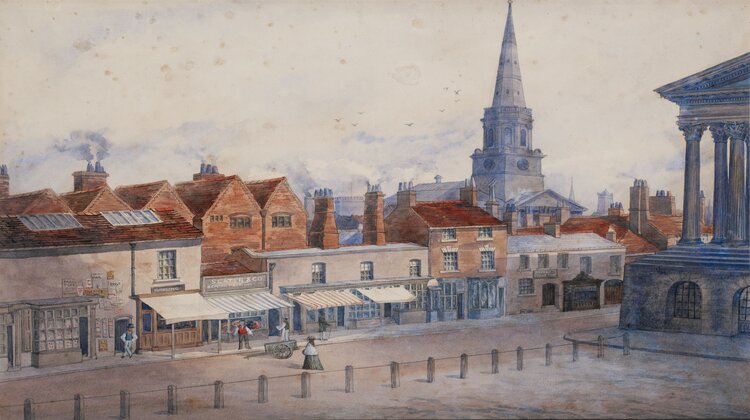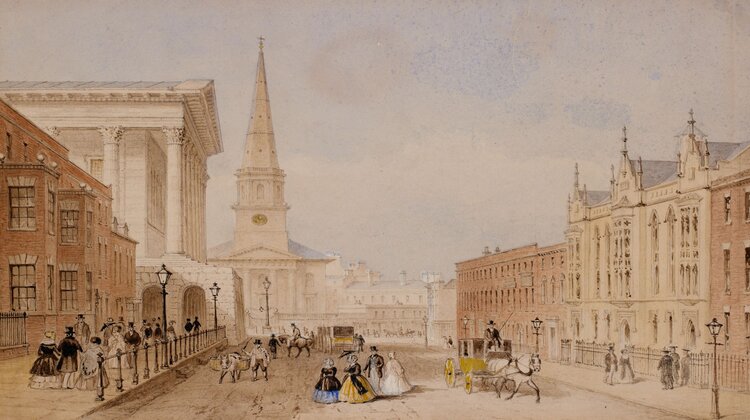Mankind already suffered from different diseases and even pandemics. It’s a natural event. Sometimes we overcome them by adapting our lifestyle or by finding the right medicine or vaccine. Other times, the disease or condition slumbers for many years before making new victims. A known example of the latter is Ebola in several African countries or maybe Covid-19 in the years to come.
In this article, I want to talk about another disease with an interesting historical background: Rickets.
Rickets is a condition that become more common because of the socio-economical evolution within our own society. Said in a short way: we brought it upon ourselves. Did I make you curious? Well, I will explain everything about the historical context of rickets in this article.

What is rickets?
Ricketsis a disease, also called the ‘English’ disease. The disease is also known under the name Rachitis, osteomalacia, infantile rickets or juvenile rickets. When you are diagnosed with rickets, it means you lack vitamin D and/or calcium in your body.
A shortage of vitamin D and calcium in your body has a direct impact on the strength and growth of your bones. Especially with kids, who are still growing, disease as rickets can have a devastating impact. The bone condition affecting adults is called osteomalacia.
Our most common source of vitamin D is direct sunlight. That’s why during winter months, we often feel more depressed or suffer from a lack of energy. The less sun we get, the less vitamin D we get. Of course, too much sun is also bad for your skin (cancer) and body.
Also a bad diet can cause a lack of vitamin D. If you need more vitamin D, you can try eating more (fatty) fish like salmon or tuna. But a lot of our foods are also fortified with the vitamin, like milk or cereal.

The effect of rickets (rachitis)
The effect of rickets is clearly negative:
- deformation of bones and therefore limbs
- O legs (bow legs)
- X legs (knock knees),
- weak and damaged teeth
- …
The treatment is therefore depending on the outcome of the condition, which could be any of the above and even more. In earlier days, children would get therapeutic light sessions to help them get more vitamin D.
History of rickets: the industrial revolution
But why was I talking about the interesting history of rickets? Well, it has a very strong link with the social and economical evolutions in Western society. Our own behavior made it more common in our society.
It was the Industrial Revolution that made rickets a well known condition. This Industrial Revolution started halfway the 18th century in England, before spreading it’s advancements throughout whole Europe (via Belgium) and the world.
But why the Industrial Revolution? You need to know that the Industrial Revolution marked the start of the use of raw materials like coal or cokes and the appearance of factories with there high chimneys, blasting out heavy smokes. The existence of these factories also made people move from the countryside to new formed cities close to their new jobs.

This meant a lot of things:
- People were living in the more darker small worker’s houses and not in the sunny countryside
- People were also working in the more darker factories instead of working on the sunny fields.
- Working in a factory could take up more than 10 hours a day, which also meant you were not getting that much sunlight either
- This situation was not only for adults, but also for children. Child labor existed and it was even more darker and underground, like coal mines
- People were living clos by the factory, under the unhealthy smokes that came from their chimneys
All these factors meant that people, and especially children, were not getting the amount of sun (thus vitamin D) that they needed to be healthy. It’s not a surprise that a condition like rickets got very common in this new socio-economical era. You can even say that it’s one of the first, maybe even the first, disease triggered by environmental polution.

Rickets: why is it called the ‘English disease’?
I already mentioned the nickname for rickets being the ‘English’ disease. This was logical, seeing the industrial revolution first flourished in England, where this condition was also noticed for the first time on this large scale.
But historical evidence suggests that even before the industrial revolution, rickets was a known disease. In the Netherlands, cases of rickets are found in the 16th century. A period where it became fashion to start wearing clothes that covered your whole body. A pale body showed wealth, because it meant you didn’t work on the fields. And like we already learned in this article: less sun means less vitamin D and a higher risk to get the rachitis disease.

Source:
Historicus Rob
Pictures:
Pexels
Unsplash





